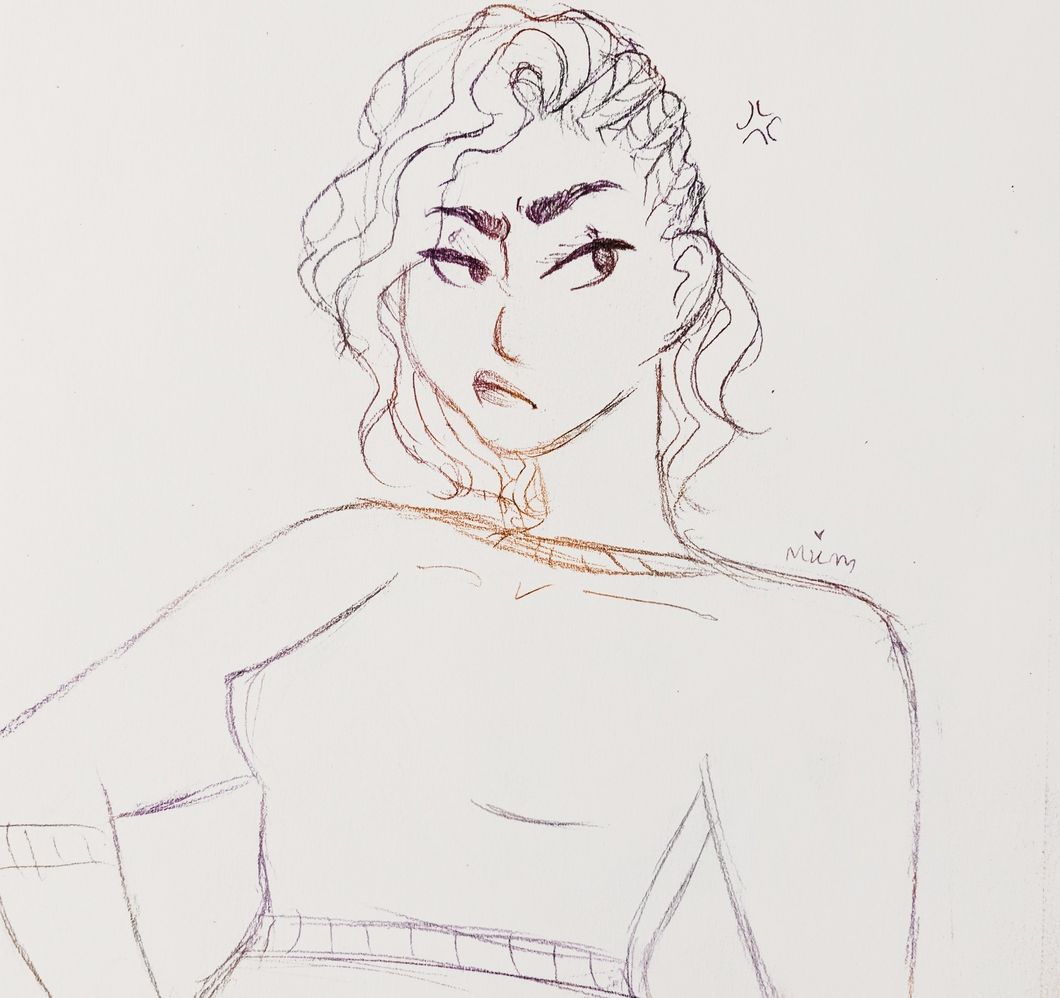A brief preface: I am a small person. I am 4'11". And I am also everything one would expect a 4'11" person to look like. I am very very skinny with rail-like extremities—I did weigh 99 pounds, but since starting college I weigh 93, and I'm simply not sure whose fault that is—with a body that consists not really of shapes but of a series of precipitous drops into more precipitous drops. I recently said to a friend that I am a child in a child suit; and it is one of those late evening truths that settled into me over time, that nestled itself into my heart of hearts before really astounding me. I decidedly do not have a grown-up body.
That said, as a person who does not require the strappy support, I personally have found it rather easy to denounce bras and phase them out of my everyday dress except under rather specific circumstances. For those of you who may not know, this is what a bra looks like:
And this is what a bra does to one's supple flesh, especially if one's assets demand more attention:
It is a luxury that I don't have to concern myself with bras and straps and wires and things, and to all you people with lovely, sizeable breasts, I want you to know that I acknowledge this luxury. I am able to view bras as purely a social construction, something women are expected to wear to discipline members of the bodily fam that should be set free while men are not expected to do anything to discipline themselves except wear pants if that.
But when I talked to one of my many busty friends—I am either very good at picking out busty friends, or everyone seems busty to me, a person irrevocably lost in her smallness—and she said that bras are helpful for those occasions when she doesn't feel like getting punched in the face by her boobs, I was forced to face a segment of reality around which I've never had to wrap my double-A mind. What if bras… are not evil?
The term "bra" as many of us know comes from "brasserie," a word first used by American Vogue to describe a simpler, less constraining corset. It was New York socialite and patron of the arts Mary Phelps Jacob who first designed and patented the bra in 1914 because the corset was getting in the way of her enjoyment of parties and balls. As they do. This design was like a halter top but was rarely worn out of the house. It was only after American forces joined World War I and women began to take men's slots in the workplace that bras further developed and were accepted outside of the home because one has difficulty building machinery while wearing a metal cage. In the 20s Ida and William Rosenthal created the Maidenform, a bra meant to accentuate the womanly figure and acknowledge the nuances of different body types. Disconcertingly, it was men who invented the push-up bra and Victoria Secret—but in the late 70s Lisa Lindahl, Polly Smith, and Hinda Miller forged the "Jogbra," what would become the sports bra, out of jock straps. If this isn't a shining example of poetic justice I don't know what is. And from this time on we witness the duality of both the accommodation of bra manufacturing to expanding bra sizes and shapes and what I, a Blythe mosquito-bite feminist, would call the stagnation of the business in the form of enforcing arbitrary, unhealthy, and perhaps impossible beauty standards such as, oh I don't know, unwrinkly and anti-aging breasts. (Unless that is a legitimate concern of people with actual breasts?)
The history is fraught with conflict. The bra was developed as a correction to the corset, which was objectively limiting and imposing, and it is certainly more accommodating than its metal ancestor. My initial thoughts are that it is also an extension, a modification, of the corset, an improved bodily cast but a cast nonetheless, because it by nature tethers the wearer, gathers and holds everything in place… a manifestation of repression of one's femininity. And yet there are businesses that work to provide comfortable and stylish options for a wide variety of gender and sexual identities, that emphasize the identity of the wearer over the style of the bra and the expectations looming behind its history.
As a person who doesn't need bras, I thought them wicked blights, social constructions forced upon female bodies by men who couldn't handle the voluptuousness of breasts and nipples. But I am beginning to arrive upon an uncomfortable truth: my ignorant bee-sting feminist viewpoint was limiting and I was forgetting that part of the purpose of bras is support, which is part of why people search high and low for the right fit. Those who search are not necessarily catering to social constructions but trying to find comfort, or unique sensuality, or singular support, or, in the cases of my large-breasted sisters, trying not to get hit in the face with a stray boob. And that is ok.














